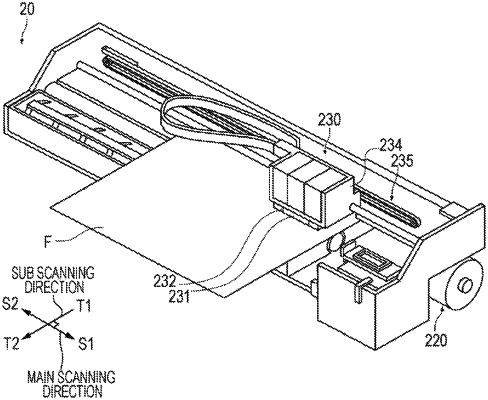| CPC C09D 11/101 (2013.01) [B41J 2/21 (2013.01); B41J 2/2107 (2013.01); B41M 5/0023 (2013.01); B41M 7/0081 (2013.01); C09D 11/037 (2013.01); C09D 11/107 (2013.01); C09D 11/322 (2013.01); C09D 11/38 (2013.01)] | 10 Claims |

|
1. A radiation-curable ink jet composition comprising:
a polymerizable compound component including a monofunctional monomer component and a multifunctional monomer component;
a photopolymerization initiator; and
titanium oxide as a white color material, wherein
a content of the monofunctional monomer component is 90 mass % or more based on the total amount of the polymerizable compound component; and
a weighted average of glass transition temperatures of homopolymers of the respective polymerizable compounds is 48° C. or more and 65° C. or less when mass ratios of contents of the respective polymerizable compounds are weighted.
|